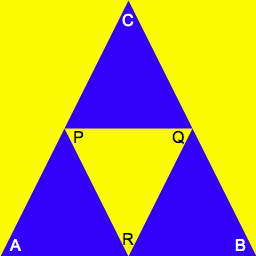CSCI 150: PreLab 8 Answer Key
Recursion
In this optional prelab (you do not have to turn this in, it is just an additional resource), we will formulate some of the ideas necessary to complete Lab 08.
Recursive Output
For the following two problems, you'll work out by hand the result of method invocations of the following two recursive methods.
Function strange
def strange(x) :
if x <= 0 :
return 1
else :
return 5 * strange(x-1) - 2
Function weird
def weird(x) :
if x > 0 :
print(x,"",end='')
if x%2 == 0 :
weird(x-3)
weird(x-2)
else :
weird(x-1)
Answer:
strange(3) = 63 since
strange(0) = 1
strange(1) = 5 * strange(0) - 2 = 5 * 1 - 2 = 3
strange(2) = 5 * strange(1) - 2 = 5 * 3 - 2 = 13
strange(3) = 5 * strange(2) - 2 = 5 * 13 - 2 = 63
2. What is the output of weird(8)
Answer:
8 5 4 1 2 6 3 2 4 1 2Part 1 - Recursion with Numbers
As we have seen (or will have seen, depending on when you're looking at this), the factorial function can be computed not only using a loop, but via recursion as well. Recall the the typical definition of factorial looks something like this: 0! = 1, 1! = 1, 2! = 2*1 = 2 and 3! = 3*2*1 = 6, and in general, n! = n*(n-1)*...*3*2*1.
But we could also define the factorial function recursively as follows. We'll use fact(n) to denote our recursive representation of n!. We'll define fact(n) = 1 when n is 0 and fact(n) = n*fact(n-1) otherwise. If you think about it, fact(n) gives the exact same values as n!.
Answer:
power(n, 0) = 1 [the base case]
power(n, k) = n * power(n, k-1) [the recursive call]
4. Give an analogous recursive definition for the sum of the first n perfect squares. For example, your definition should satisfy sps(1) = 1, sps(2) = 1 + 4 = 5, and sps(3) = 1 + 4 + 9 = 14. No loops!
Answer:
sps(0) = 0 [the base case]
sps(n) = n * n + sps(n-1) [the recursive call]
Part 2 - Recursion with Strings
Here is pseudocode for recursively printing a string s in reverse
If the length of s is 0, do nothing
Otherwise, print the last letter of s and reverse s with the last letter removed.
Answer:
If the length of s is 0 or 1, return True.
Else if the first and last characters in s are not the same, return False.
Otherwise, remove the first and last letter from s (using new_s = s[1:-1]) and return whether or not the new_s is a palendrome.
Part 3 - Fractal Images
Consider the following figure.

Let Ax and Ay denote the x and y coordinates of the corner labelled A in the large triangle above. Let Bx, By, Cx and Cy be definied similarly. Assume P, Q and R each lie at the midpoint of their corresponding edge in the triangle ABC.
Answer:
- P is the midpoint between A and C, so Px = (Ax + Cx) // 2 and Py = (Ay + Cy) // 2
- Q is the midpoint between B and C, so Qx = (Bx + Cx) // 2 and Qy = (By + Cy) // 2
- R is the midpoint between A and B, so Rx = (Ax + Bx) // 2 and Ry = (Ay + By) // 2
Honor Code
If you followed the Honor Code in this assignment, write the following sentence attesting to the fact at the top of your homework.
I affirm that I have adhered to the Honor Code in this assignment.